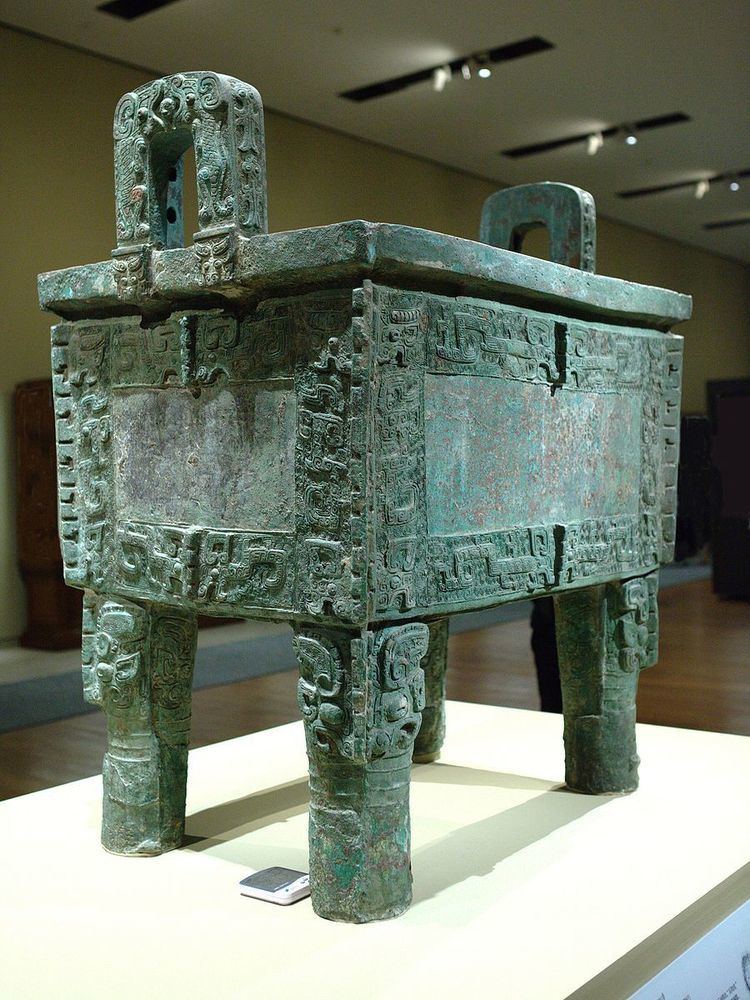 | ||
The Houmuwu ding (Chinese: 后母戊鼎; pinyin: Hòumǔwù dǐng), formerly called Simuwu ding (Chinese: 司母戊鼎; pinyin: Sīmǔwù dǐng), is a rectangular bronze ding (sacrificial vessel, one of the common types of Chinese ritual bronzes) of the ancient Chinese Shang dynasty. It is the largest piece of bronzeware to survive from anywhere in the ancient world. It was unearthed in Wuguan Village, Anyang, Henan in 1939.
The ding is named for the inscription in bronze ware script on the interior wall, which reads 后母戊 (Hòumǔwù), meaning "Queen Mother Wu". This identifies the dedicatee as the wife of King Wu Yi of Shang (reigned c. 1147–1112 BC). The dedicator was presumably her son, King Wen Ding (reigned c. 1112–1102 BC). The inscription was originally misinterpreted as 司母戊 (Sīmǔwù), but since the 1970s scholars have reached the consensus that the first character should be read as Hou (后, queen), whose mirror image looks like Si (司, administrator). The National Museum of China has officially corrected its name.
The ding is of the rectangular type, with four legs. It is 133 centimetres high, 110 centimetres wide, and 79 centimetres deep and weighs 832.84 kilograms. Compared to earlier ding, such as the Duling rectangular ding, it is wider and its walls are thicker, making it much more massive. Each side has a blank space in the middle, surrounded by a band of decoration featuring taotie (animal faced creatures) and kuilong (one-legged dragons). There are two handles, each decorated on the exterior with two tigers facing each other, their jaws closing around a human head in between them, an image which is also found on Fu Hao battle axes.
